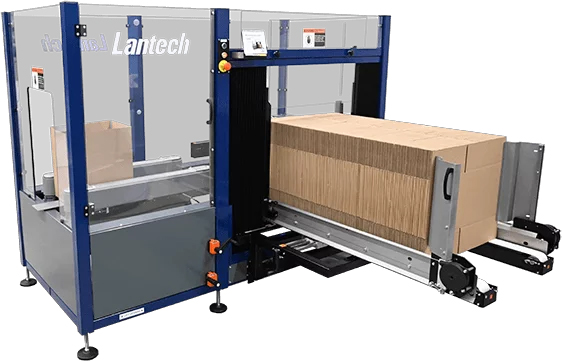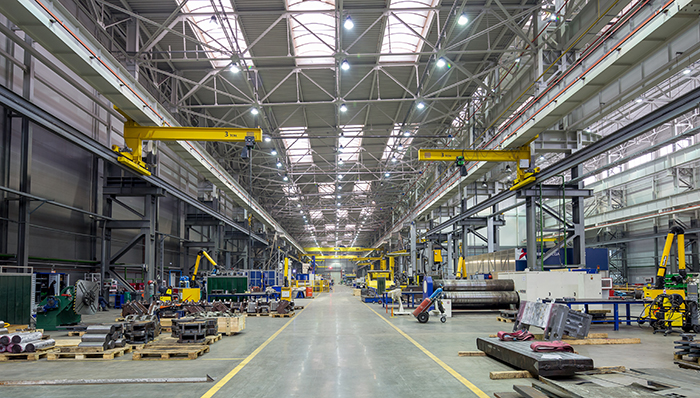How Many Warehouse and Manufacturing Workers are Retirement Age?
December 2024 Insights

This month, we’re looking at the growth of workers 65 or older, who choose to stay on the job. They now make up 22% of all American workers. How does that affect manufacturing and distribution operations? What can you do to accommodate these workers? Also: more on packaging automation, manufacturing in Texas and more.
Which States Have The Highest Share of Retirement-Age Workers?

Overall, 22% of American labor is at least 65 years old
Like its population in general, America is aging, and so is its labor force.
A Lending Tree analysis outlines the trends and what the could mean for manufacturing and warehousing companies working to maintain labor consistency. How many of workers at least 65 years old are still working? Today that’s 22%, with the probability that this faction of workers will continue to grow. For office work, this is more manageable than for construction, trades, manufacturing and warehousing.
Key takeaways
- The state with the most retirement-aged workers is New Jersey, with 33.8%–over a third of its entire labor force–still clocking in daily. Other states with high percentages include Maryland, North Dakota, New York and New Hampshire.
- These percentages are growing. For instance, New Jersey’s labor pool was 20.3% in 2022 and is now 33.8%.
- While the national percentage of these workers has declined since 2022 by half a percent, only 11% of retirement age workers were still at the job in 1987. We’ve doubled the number of aging workers.
- The youngest labor pools exist in West Virginia, at 15.7% retirement age. Missouri (15.8%), Michigan (17%) and Iowa (17.2%) are among the states with fewer older workers still on the job.
- The primary factor for these increasing numbers is the simple population growth in the 65+ demographic. This is the largest generation in American history. Its replacement generation–the GenZ cohort–is one of the tiniest. This means we’re losing more workers to retirement every year than are entering the labor pool, even including immigration.
- Another factor is economic: these workers have less secure retirements, higher debts, and greater need for employer-based insurance.
For physical jobs like those of picking orders, assembling components or working in warehouses, this is an issue of more concern than for office or clerical roles.
Read more
- How Automation & Material Handling Extends the Careers of Skilled Workers
- Give me a Reason to Stay
- Ergonomics and Pallet Handling
The 3 Most Important Things You Need to Know When Looking for Packaging Solutions

Lantech’s Sara Mulkey writes about the relationship between the right packaging solutions, product damage and efficiency in this blog post. Since 2% of all shipments are damaged during transport, packaging yours for optimal safety can reduce product returns and damaged shipments.
- 90-degree angles are critical for erected cases. Of all products transported, 1% are damaged simply due to poor case erecting. Square, cases with 90-degree angles helps reduce the chances of damage in transit. They resist jamming, stack better and are less likely to get caught in machinery or fall due to unstable stacking.
- Case erectors can help you build consistently square cartons. Consider your product mix, the type of cartons used, how closure is achieved, the packaging environment, throughput and how your shipments are transported as you make specification decisions.
- The importance of using the right case erector system. Consider blank (flat cardboard) delivery systems. How are they feeding the erector? How are you handling the cases up and downstream?
Full understanding of your carton and packaging process is critical when you want to build the right system.
Texas Manufacturing Outlook Survey

Texas is one of America’s most dynamic manufacturing states. In November, manufacturing activity held steady in the Lone Star state. Here’s what the Dallas Federal Reserve reported:
- Texas factory activity was flat in November, according to executives responding to the survey. The production index–considered a key indicator–slipped to near-zero after rising to 14.6 in October 2024.
- Labor market measures suggested increased employment and steady workweeks this month. The employment index shot up 10 points to 4.9. Nineteen percent of firms noted net hiring, while 14 percent noted net layoffs. The hours worked index moved up to zero, a reading indicative of no change in workweek length from October.
- Expectations are for increased manufacturing activity six months from now. The future production index inched up to 44.0, a three-year high. Similarly, the future general business activity index edged up to a three-year high of 31.2. Other indexes of future manufacturing activity showed mixed movements this month but remained elevated.
Quick hits
- Speaking of Texas, the DFW metro area leads the nation in industrial sales as of 11/20/2024. The Metroplex is has seen $3.3 billion in industrial real estate sales this year, surpassing the Bay Area year to date.
- In Warehouse Ergonomics: A Must For OSHA NEP Compliance, Part 2, MHI discusses warehouse ergonomics. Since OSHA inspectors are are now conducting unscheduled warehouse inspection–and examining ergonomics as part of the program–this issue is more pressing than ever.
- Visual Capitalist attempts to answer the question: “Is U.S. Manufacturing in Decline?” In this graphic, the number of American manufacturing firms has shrunk by 14% since 2004, with the biggest declines in apparel, printing and textiles. Beverages, tobacco, foods and chemicals have shown growth over that timeframe.
Tags: warehousing, Manufacturing, labor
Scott Stone is Cisco-Eagle's Vice President of Marketing with 35 years of experience in material handling, warehousing and industrial operations. His work is published in multiple industry journals an websites on a variety of warehousing topics. He writes about automation, warehousing, safety, manufacturing and other areas of concern for industrial operations and those who operate them.



